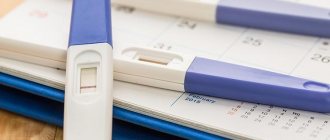What is an ectopic pregnancy and why is it dangerous?
A normal pregnancy goes like this.
The sperm penetrates the egg, which is released into the fallopian tube during ovulation. The latter begins to contract, pushing the fertilized egg into the uterus. There, the egg attaches to the uterine wall and begins to transform into an actively growing embryo. In an ectopic Pregnancy Symptoms and When to Call 911 pregnancy, as the name implies, the egg does not enter the uterus. Most often, it lingers in the fallopian tube - too tortuous, narrow or weak to push the fertilized egg where necessary. But there are times when the egg is implanted in the cervix, ovary, or other place in the abdominal cavity.
An ectopic pregnancy does not end well. A growing embryo sooner or later breaks the walls of the organ to which it is attached. The result is massive internal bleeding, infection in the abdominal cavity and peritonitis (however, you may not live to see it).
According to Ectopic Pregnancy: Symptoms, Causes, Risks And Treatment of the American Pregnancy Association, one in fifty pregnancies is ectopic.
Features of measuring basal temperature
During the period of active planning of pregnancy or in order to avoid its occurrence, many women draw up schedules for changing BT. With their help, you can accurately determine the period of ovulation. The method is quite delicate and requires systematicity and strict adherence to the regime.
An example of maintaining two basal temperature charts. In the top graph, pregnancy never occurred (non-pregnant graph). At the bottom, conception occurred (pregnancy chart).
The entire cycle is one graph. Ideally, to track dynamics and possible deviations, it is recommended to draw up BT schedules over several months.
Temperature measurements should be taken in the morning, rectally, after a long sleep, without getting out of bed (even to go to the toilet). In the period from 12 to 17 days from the beginning of the cycle, a phase change occurs and a sharp slight increase in temperature is noted. Ovulation occurs, after which, in case of conception, the temperature will remain elevated; if not, before the expected day of menstruation it will decline.
What are the signs of an ectopic pregnancy when you need to see a doctor?
At first, an ectopic pregnancy feels almost no different from a normal one. Delayed menstruation, discomfort in the lower abdomen, pain in the chest, two lines on a home test - everything seems to be normal.
Disorders can manifest themselves at any time between the fifth and fourteenth weeks of pregnancy. But most often this happens about two weeks after the delay. It is during this period that warning signs appear:
- Stitching pains and cramps in the lower abdomen.
- Nausea and vomiting accompanying pain.
- Constant dizziness, weakness.
- Pain in the rectum or radiating to the shoulder and neck.
- Discharge similar to menstrual discharge.
If any of these symptoms occur, it is important to consult a gynecologist as soon as possible.
Examples of basal temperature measurements
For clarity and a complete understanding of the picture, let’s consider possible BT indicators at different stages of pregnancy:
| weeks | Values |
| The third, corresponding to the first embryonic | 37-37.5° (sometimes a little higher). Numbers below 37° may indicate abnormal development of the embryo or the threat of arbitrary termination |
| Fourth | Permissible fluctuations 37.1-37.3°, maximum up to 38° |
| Fifth | Stable temperature 37.1-37.7°. If there is a constant decline or increase in indicators, you need to monitor the appearance of symptoms in the form of pain, hard abdomen, discharge, etc. |
| Sixth | Temperatures similar to last week. A sharp decrease may indicate the death of the embryo, an increase may indicate pathology, ectopic pregnancy |
| Seventh – eighth | Allowable fluctuations are within 37.1-38°. Any abnormalities require examination |
| Ninth – tenth | Same as last week |
| Eleventh | The temperature should drop slightly to 37-37.2°. If the numbers remain high, you should see a gynecologist, there may be an ectopic pregnancy |
| Twelfth | Oscillations of 37.6-37.7° are considered ideal. Small deviations down to 37° or an increase to 38° are allowed, but you need to be extremely careful and monitor changes in the body |
After 12-16 weeks, the basal temperature level usually remains within 36.6-36.8°. If deviations in the direction of decline or increase are observed, then we are talking about hormonal imbalances or other pathologies, for example, ectopic pregnancy.
Immediately before childbirth, a fairly high temperature may be observed, which is considered normal for this period.
Example of BT indicators:
When to call an ambulance
Don't wait and seek emergency medical help if:
- You experience severe pain that lasts more than a few minutes.
- You are bleeding.
- Acute pain in the rectum is accompanied by a feeling that you have an unbearable need to go to the toilet.
- The shoulder hurts severely and for a long time (more than a few minutes). Sometimes the blood that rushes into the abdominal cavity after a fallopian tube ruptures accumulates near the diaphragm and irritates the nerves connected to the shoulder.
- You feel extremely dizzy, to the point where you feel like you are about to pass out.
Changes in temperature – basal and body
Many women are familiar with basal temperature charts. Some use them for contraception, others need them to choose days for conception. Basal temperature determines ovulation, during which it jumps to 37.00C or slightly higher and remains there throughout pregnancy. If conception does not occur, then by the onset of menstruation the temperature drops. Basal temperature is most often measured in the rectum, which is why it is also called rectal.
If the fetus is separated or the pregnancy is frozen, the basal temperature decreases
Comparing basal temperature indicators during normal and ectopic pregnancy in the early stages, one cannot notice that there is any difference between them. High levels of hormones are observed in both cases, so the basal temperature during an ectopic pregnancy is the same as during a normal pregnancy.
Why should you go to the doctor if you suspect you are pregnant?
It is impossible to determine an ectopic pregnancy at home. At least until it makes itself known with obvious dangerous symptoms.
Conclusion: when you see two lines on the test, do not wait to visit a gynecologist. The doctor will find out at the initial stage whether everything is in order. To do this he:
- Conduct an examination of the pelvic organs. This is to find out if there is any unusual tenderness or tenderness in the abdomen.
- She will do an ultrasound to determine the place where the fertilized egg has attached. In the early stages (up to 5-6 weeks), studies are done with an intravaginal sensor - it gives a more accurate result. However, there are cases when the implantation site cannot be determined. Then the doctor will prescribe an additional ultrasound for you at 8–9 weeks.
- He will suggest that you take blood or urine tests to determine the level of the hormone hCG (human chorionic gonadotropin). At the beginning of an ectopic pregnancy, the amount of this hormone is significantly less than during a normal pregnancy, and tests will show this.
The second line on the test during an ectopic pregnancy often looks very pale. This is due to low hCG levels.
What is the reason?
If the fertilized egg cannot enter the uterus, and time is running out (a fertilized egg must implant within ten days), then it will have no choice but to implant itself into the wall that is now accessible. And it turns out to be the fallopian tube.
By the way, if you are preparing for pregnancy and plotting temperature charts, then you have every chance of noticing deviations in time. The temperature during an ectopic pregnancy rises much higher than during normal embryo implantation. Therefore, you should not even wait for repeated measurements the next day - immediately seek help from a doctor.
So, we have already found out that disturbances in peristalsis can cause abnormal implantation. Let's look at the main factors that can lead to such consequences:
- Inflammation. Regular visits to the gynecologist are the best prevention of such disorders. But in advanced cases they lead to neuroendocrine disorders. Then the situation grows like a snowball - obstruction of the fallopian tubes develops. Most often, chlamydial infection leads to such disorders.
- Women who use an ectopic device should be aware of the early symptoms of ectopic pregnancy. In approximately 4% of cases, such contraception leads to similar consequences. And if the spiral has been used for five years, then the risk is even higher. An increased basal temperature during an ectopic pregnancy with regular measurements may be the first warning sign for you. In principle, it is not even the spiral itself that is to blame for this, but inflammatory processes that are caused by the presence of a foreign body in the uterine cavity.
- Abortion is another serious risk factor. They promote the growth of inflammatory and adhesive processes.
- Smoking seriously increases the risk of developing an ectopic pregnancy.
How to treat an ectopic pregnancy
There are no options - the pregnancy will have to be terminated. But in what way depends on the timing.
Drug treatment
It is used if the abnormal attachment of the egg was detected at an early stage. The specialist will give an injection of methotrexate (Trexall), which stops the growth of the placenta and forces the body to get rid of the pregnancy on its own.
Please note: multiple treatments may be required, so it is important to keep in touch with your doctor and follow their recommendations.
Laparoscopy
This is a small operation during which the surgeon will remove the fertilized egg. Most likely, the fallopian tube will not be injured.
Surgery
This is an emergency option. If the fallopian tube has been ruptured, the surgeon will remove part or all of it to save the woman's life.
Why measure BT?
For many women, measuring basal temperature is an effective way to determine the period of ovulation. This is useful to know for planned conception. Or, on the contrary, in order to avoid unwanted fertilization. The method of measuring it is quite delicate and requires strict adherence to the regime.
The process of measuring basal temperature itself is recommended to be carried out rectally, without getting out of bed after waking up in the morning and, if possible, without moving. Before the procedure, it is desirable that you sleep for at least 5 hours. The BT schedule is formed throughout the cycle. Ideally, you need to draw several such graphs, that is, measure the temperature over 3-4 months.
The indicators will change with the changing phases of the female cycle. On days 12-17 of the cycle, the temperature normally jumps to 37 degrees and above. This means that the egg is ready for conception. If fertilization occurs, BT will be slightly elevated until the delay and throughout the first trimester.
Is it possible to get pregnant after an ectopic pregnancy?
It depends on what exactly caused the violation. Here are the common causes of ectopic pregnancy:
- Infections in the fallopian tube. Due to inflammation, the tube cannot advance the fertilized egg into the uterus.
- Endometriosis.
- Scars and adhesions. As a rule, these are consequences of previous operations (the same abortions) or infections. They also interfere with the movement of the fertilized egg.
- Personal characteristics. In some women, the fallopian tube is too narrow or tortuous.
What is the reason in your case and what to do about it is best discussed with a gynecologist. The specialist will read your medical record, conduct additional research and draw up a rehabilitation plan that will help you one day conceive and bear a healthy baby.









